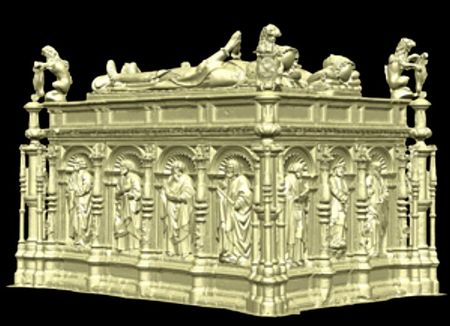First they were 3D scanned, then they were 3D printed.
Researchers at the University of Leicester, University of Oxford and Yale worked together to replicate a tomb monument originally designed for King Henry VIII’s illegitimate son, Henry Fitzroy, Duke of Richmond by Thomas Howard, 3rd Duke of Norfolk in the 16th century.
You might be thinking that this project is another one of those “scan ancient object and 3D print it” projects, but you’d be wrong. You see, this particular tomb monument was never actually finished.
Originally intended to be installed in Thetford Priory, it seems that the Priory was dissolved before the monuments could be finished. In succeeding years pieces of the monument were taken away, refinished to alternate designs, leaving just pieces, some of which now reside at the British Museum.
The team of researchers, working on the “Representing Re-Formation” project, gathered all known material on the structure, including many scattered pieces, literary descriptions and drawings. The pieces were 3D scanned, as you might expect, but the resulting 3D models were adjusted, expanded and revised according to the other information.
This work reconstructed a proper 3D model that, according to the researchers, is the most accurate representation of the originally intended design. That, of course, can be 3D printed to bring the structure into the real world – only 473 years late.


